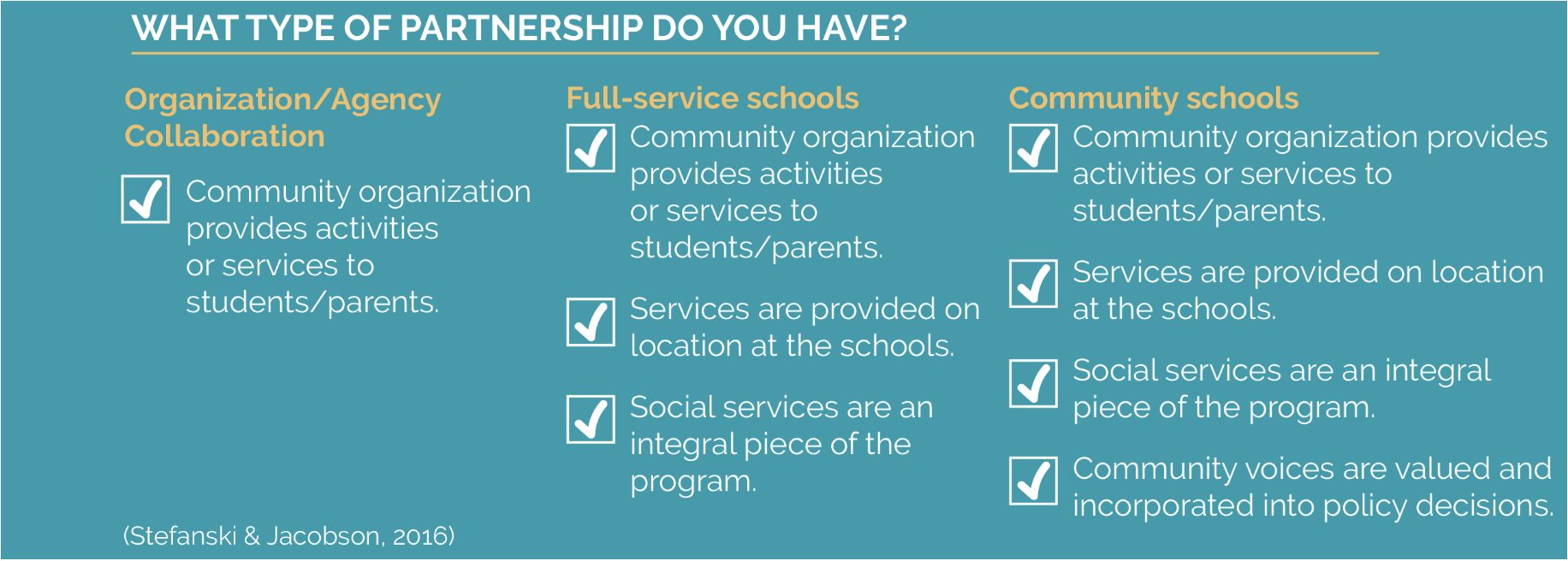Creating a Collaborate Community Partnership

Creating a Collaborate Community Partnership
Have you ever heard someone talking about “partners” and wondered what in the world that meant? Or, if you are working with a community partnership, have you ever had to play the blame game of whose job every little thing is and whose fault it is that a project didn’t go as planned? Well, this blog is for you. We want YOU to understand how to smooth things over with your community partnerships so that they are as effective and as efficient as possible.

To really get the biggest bang for your community partnership buck, you first need to figure out the structure of your partnership. For example, is your partnership designed as an afterschool program? Does it provide health or nutrition services? Maybe it’s an integrated college prep program delivering services throughout the school. Whatever your program looks like specifically, you should know when and where the program takes place, who is involved, and what your collective goals are from everyone involved in the partnership. Here is a checklist to help you figure out which general type of partnership your program falls into.

Once you know the ins and outs of what your partnership looks like, you can start to think about ways to make each piece of the partnership stronger and more cohesive. One way to accomplish this is to set explicit goals for everyone in the partnership. Basically, you need to make sure everyone is on the same page! Open communication is going to be a key to keeping everyone happy and motivated. It can also help to make sure that there is a system in place to keep the partnership moving smoothly. For example, through open communication partnerships can identify whether there are data sharing policies and practices in place so that everyone in the partnership can access participant data and outcomes to better ensure everyone is working toward the same goal.
There are many tools out there that can help your partnership self-check how your program is doing and brainstorm ways to keep improving it. For example, one tool suggests you self-check by asking yourself questions like “does our vision represent input from a broad range of people in the community?” and “does our collaborative collect information and data and use it to make informed decisions?”. Members of your team can go through this checklist by themselves and come back together to discuss the results and how to move forward. It might even be good to have someone outside of your organization come in and facilitate this process so that every voice is heard, and results are taken into consideration without any possible bias. Some examples of programs that have created successful community partnerships are the Chicago Roadmap Program, the After School All-Stars (ASAS) at August Boeger Middle School in San Jose, CA, and the Citizen Schools at Bedichek Middle School in Austin, TX. Modeling certain aspects of your program after these examples can be a great way to get ideas on how to keep everyone involved, motivated, and working toward the same goals.
Act now to start improving your program today! If you would like more information about this topic, please email ceopeval@ku.edu and we’d be happy to share our full Community Partnerships Research Brief.

Contributed By Amelia Murray
Amelia Murray is an Assistant Researcher with the Research, Evaluation & Dissemination Department in the Center for Educational Opportunity Programs. She currently works on data entry and evaluation of GEAR UP and other educational access programs.
Follow @CEOPmedia on Twitter to learn more about how our Research, Evaluation, and Dissemination team leverages data and strategic dissemination to improve program outcomes while improving the visibility of college access programs.